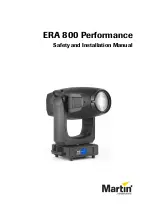
Rev. 4-16a
18
Addendum
Frequently Asked Questions (FAQ)
See website for more details and additional information
Probe size vs. Sample volume
Selecting the proper size probe is a critical factor when sonicating a sample. The sample volume to be
processed must correlate with the tip diameter. Each probe has a recommended sample volume
range. This range may overlap with other probes. For example the 1/8” probe can process
approximately 1-15ml. Depending on the type of sample you may be able to process a little less than
1ml or slightly more than 15ml.
Small volumes require a small tip to fit inside the sample tube. Small tips or probes are recommended
for processing samples inside small, thin vessels and never samples larger than 50ml. Probes ¼” or
less are high intensity and made for short processing times. Using a small probe tip for long time
periods will generate a considerable amount of heat. Pulse mode should be used to reduce heat
buildup.
While there is no absolute sample volume range for any probe/horn, below is a general guideline to
follow. Using a sample volume outside each tip diameter’s range is generally not recommended.
Tip Diameter
Processing Volume Range
1/16" (2mm)
0.2ml - 5ml
1/8" (3mm)
0.5ml - 15ml
1/4" (6mm)
5ml - 50ml
Vessel shape and size
A narrow vessel is preferable to a wide vessel. The ultrasonic energy is generated from the tip and is
directed downward. As a sample is processed the liquid is pushed down and away in all directions. If
the vessel is too wide it will not mix effectively and some sample will remain untreated at the periphery.
Twice the volume in a narrow vessel takes a shorter time to process than the same volume in a wider
vessel. The probe should never touch the sides or bottom of the vessel.
How to prevent foaming
(small sample issue)
Foaming is a problem that often occurs with samples volumes below 1ml. The cause of foaming is
generally 2 issues: too high of an amplitude setting or the tip is not immersed deep enough.
Tip depth
The depth of the probe inside the sample vessel is another important issue. If the probe is too close to
the surface of the liquid it can create foam. If the probe is too deep it may sonicate against the bottom
of the vessel and not effectively processing the sample. The sample must flow freely below the tip in
order to be mixed effectively. Without effective mixing you cannot ensure the entire sample volume will
pass below the tip and become processed. The probe should be immersed at least 1.5 times the tip
diameter. Before processing actual samples, it is recommended to test the probe in a vessel filled with
water to observe the ultrasonic energy and the flow pattern of the liquid. During this test you can adjust
the probe’s depth until you see adequate mixing and movement of the water.
Power vs. intensity
Power is the measure of the electrical energy that is being delivered to the convertor. It is measured in
watts and displayed on the sonicator’s screen. At the convertor, the electrical energy is transformed


































